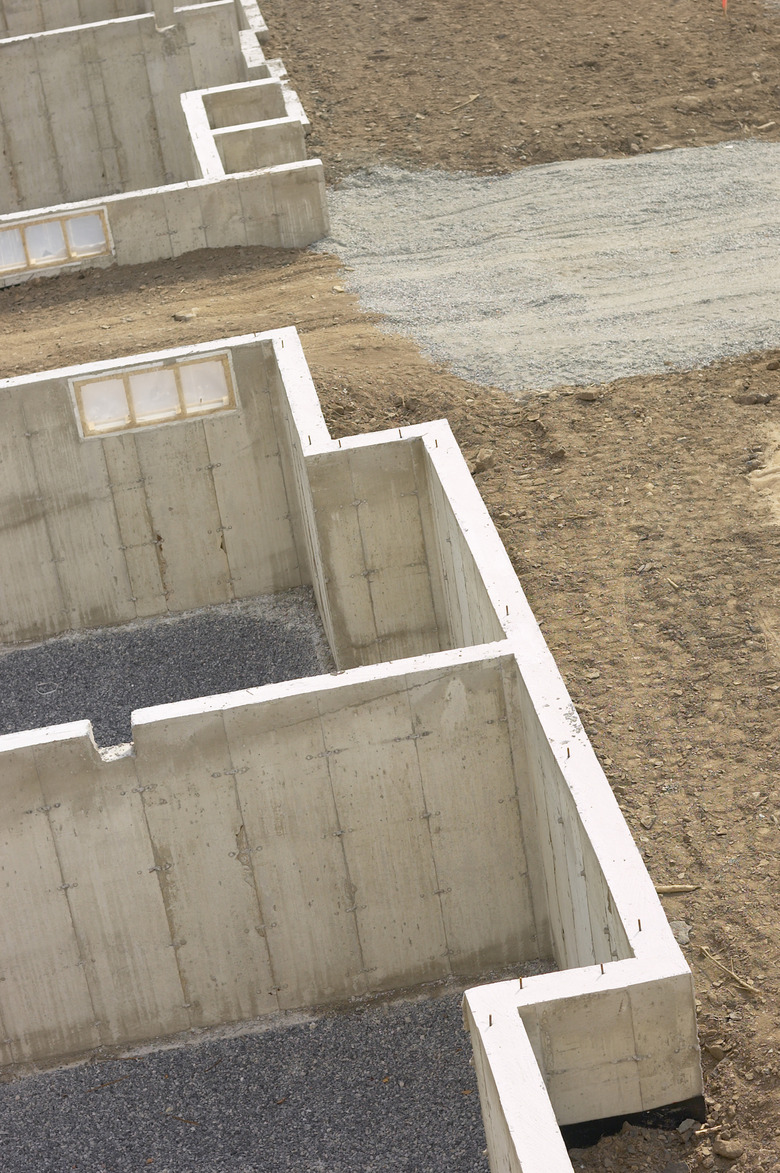Tension Vs. Compression Of Concrete
Concrete has been used for construction since Roman times. It is essentially artificial rock, made with a paste of cement and water to bind together some solid material like sand or gravel. Modern concrete is made with Portland cement, water, sand and some rock called aggregate. It is a versatile and durable building material, used in roadways, bridges, houses, commercial buildings and many other places. Properly installed and cured, it will last for years.
Compression
Compression
Concrete has enormous compressive strength, the ability to withstand heavy weights or forces on it. It also gains strength as it ages. Concrete will solidify in a few hours and harden or set in a few days, but continues to gain strength for at least 28 days. Some very thick concrete structures, like dams, will continue to gain strength for months or years.
Tension
Tension
Concrete has almost no tensile strength, the ability to withstand pressing or stretching. Put a board between two supports and press down on the center. It will bend. The top of the board is under compression, the bottom which bends is under tension. Concrete can resist the compression, but will break under the tension. Concrete cracks in roads and slabs are largely due to tension; different weights in different areas produce tensile forces.
Tension-Compression Ratio
Tension-Compression Ratio
The tension to compression ratio for concrete is about 10 to 15 percent. That is, it can withstand about 10 times the pushing force or compression of the pulling force or tension. Both strengths increase with age, but the ratio is steady. Portland cement concrete less than a year old has compression strength of 1,000 pounds per square inch (psi) and tension strength of 200 psi. Concrete more than a year old has compression psi of 2,000 pounds and tension psi of 400.
Reinforcing
Reinforcing
To give concrete tensile strength — to support beams in a bridge or building, for instance — reinforcing steel is added. Steel has great tensile strength; it bends without breaking. The combination produces the strength needed for bridge girders, roadways, building walls and other construction. An even stronger combination is prestressed concrete. The reinforcing steel is stretched or put under tension before concrete is poured around it. When tension is released, the tendency of the steel to return to its unstretched form adds reverse tension which strengthens a concrete beam or girder.
